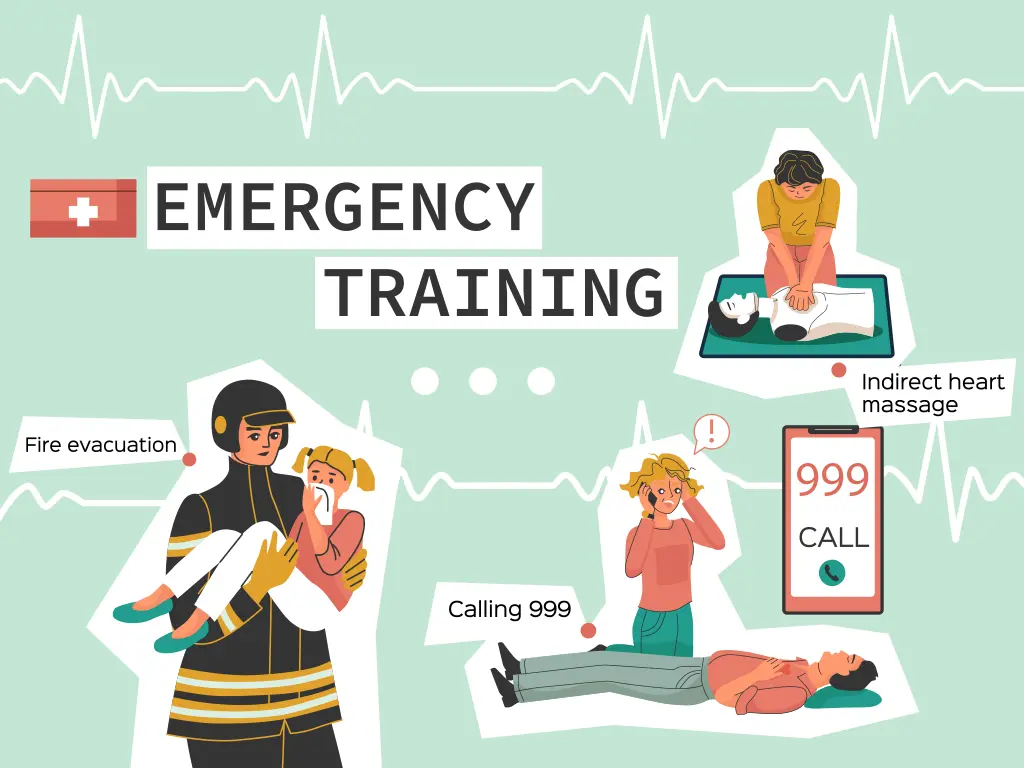First aid refers to immediate help that is provided to an injured or sick person until professional medical experts arrive. Whether it’s pressuring or covering the wound, performing CPR, or administering minor burns, after proper training, first-aiders can handle and deal with almost any situation promptly. Being a broad category, first aid includes a range of tasks ranging from simple dressing of a wound to performing CPR on someone who is unconscious and has breathing issues.
First aid is highly crucial for multiple situations that don’t require taking someone to the emergency room and hospital. As it has a broader scope having a first aid kit at your place can prepare you to deal with numerous minor emergencies that cover different areas such as healthcare settings, construction sites, travel and tourism, outdoor activities, community events, schools and educational institutions.
Understanding Level 3 First Aid
Level 3 first aid is an advanced level of first aid training which includes a comprehensive set of skills focused on preparing learners to deal with numerous emergencies efficiently. Simply put, the level 3 first aid course is beyond basic first aid training including skills like performing CPR or using Automated External Defibrillator (AED). The qualification ensures that learners are equipped with the right knowledge and well-prepared to deal with emergencies whether at the workplace, in a childcare setting or any other setting that includes infants or children.

We have mentioned in detail, what Level 3 First Aid qualifications be it first aid at work, paediatric first aid or emergency paediatric first aid cover in detail:
Topics/Units Covered under Level 3 First Aid
Undertaking the Level 3 Award in First Aid demonstrates a commitment to saving lives and highlights the importance of being a capable and proactive first responder.
Whether it’s Level 3 First Aid at Work, Paediatric First Aid or Emergency Paediatric First Aid, these are the specific topics that are covered under the umbrella of Level 3 First Aid:
1. The role and responsibilities of a first aider
Once enrolled in Level 3 first aid, this unit of the course covers the essential role and responsibilities of a first aider. As a learner, you will learn incredibly important responsibilities a first aider has to perform; you will learn:
- How to assess the situation calmly and quickly to get a complete understanding of the situation, including the cause of the situation and how many casualties are there.
- To explain the situation to the casualty and explain what are you going to do,
- To protect yourself and the casualty while calling 999 for help.
- How to help them such as performing CPR or applying pressure to the wound to prevent further injury.
2. Assessing and managing emergency situations
The course also covers and teaches how to assess the surroundings of the accident that occurred and check for any potential dangers that could harm you as well; for instance, assessing hazards, fires, or electrical dangers. In such an event, this course will prepare learners so they can assess the situation both for themselves and the injured person.
3. Cardiopulmonary resuscitation (CPR) for adults, children, and infants.
Other than that learners will also learn about performing CPR techniques, including chest compressions and rescue breaths. Moreover, the training also includes compression depths, hand placement and rate for each age group, whether infants, children or adults.
4. Dealing with unconscious casualties and choking
While studying a Level 3 first aid course, the learners will also be provided with instructions on how to assess unconscious casualties. When encountering an unconscious person, they will be trained enough to check the signs of breathing and then perform CPR if required.
On the other hand, if a person is choking due to a blocked airway, learners are taught techniques such as abdominal thrusts (Heimlich manoeuvre) for adults and chest thrusts for children to clear the blocked airway. Learning these skills will help learners prevent the casualties of further harm or injury.
5. Learn about the recovery position
Participants and learners are also educated about the recovery position to prevent vomit or choking while taking the first-aid level 3 course.
6. Wound care, bleeding control, shock management and other minor injuries
In the event of an emergency, the person who is injured or affected is usually in a state of shock. During the training, the participants will not only learn to assess the situation but also how to control it professionally. For instance, if a person is severely injured and bleeding, they will learn how to control the excessive bleeding, cleanse the wound and cover it properly to prevent further damage and spread of infection.
There are many levels of first aid qualifications, some of which are basic first aid courses and can be completed in 1 day; however, these courses are extensive and cover a range of topics as mentioned above. Different levels of first aid courses include the following:
- Level 3 First Aid at Work
- Level 3 Paediatric First Aid
- Level 3 Emergency Paediatric First Aid
What makes Level 3 First Aid Courses Different from Level 2?
Although the main difference between these courses is the levels and the time required to complete both courses, the difference lies in the course units as well.
Level 2 courses are required for places with low risk hazards, topics are not extensive and the course can be easily completed in just 8 hours.
On the other hand, whether it is first aid at work or emergency paediatric first aid, these courses are required and designed for higher risk workplaces. These courses take at least 3 days to complete and topics are covered in depth.
Where can a Level 3 First Aid Qualification be used and applied?
There are many occupations – medical and non-medical fields – that require individuals with first aid courses according to the law. Here are some of the occupations:
- Factories and Manufacturing
- Forestry and Fisheries
- Construction
- Sports and Athletics
- Distribution and Shipping
- Outdoor and Nature Activities
- Agriculture
- Recreational Facilities

At these facilities, one drop, one slip or one fall can severely injure a person and having a person with first aid training can make a huge difference by preserving someone’s life. Therefore, it is essential to have trained individuals at any workplace or childcare setting for the safety of the staff and employees.
All things considered, no matter where you work or what career path you are on, taking this course will boost your confidence and enable you to handle several emergencies at your workplace. If you want to enrol on this course, at Britannia School of Health Care, we offer the Level 3 Award in First Aid at Work which is specially designed for workplaces with higher risks and how to deal with them promptly.
Final Thoughts
Studying a level 3 first aid course is a crucial investment as it provides a learner with the necessary skills to preserve someone’s life in an emergency at a workplace or a childcare setting. The extensive knowledge will help them respond confidently and instantly in emergencies. Anyone who wants to keep themselves updated regarding first aid can enrol in a first aid course.


